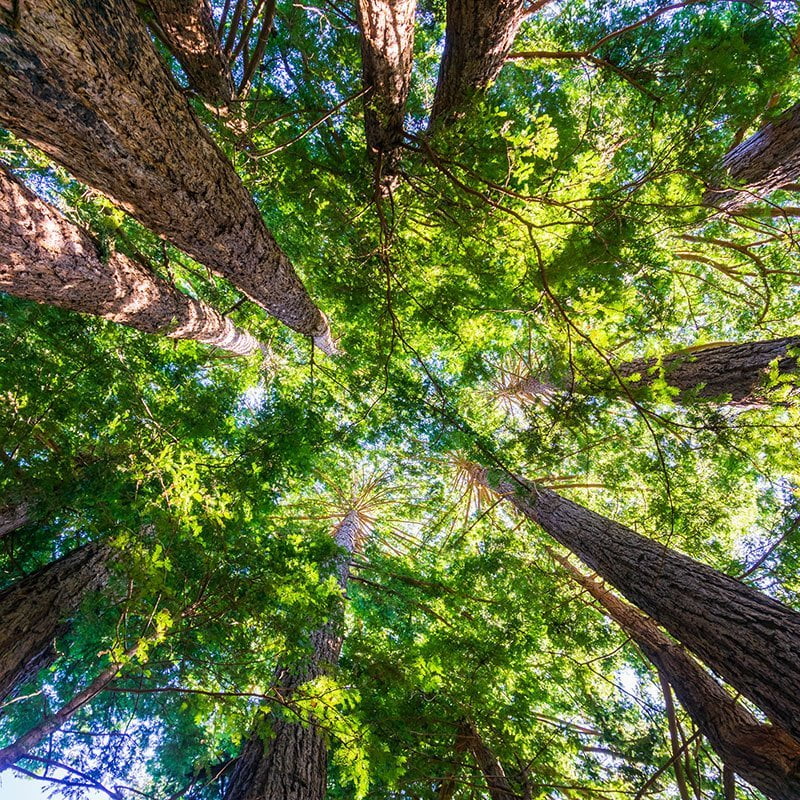Improving our forests’ health and ability to adapt to climate change
Forests face various challenges, such as human development and unsustainable logging practices. Fortunately, we can use science-based silviculture management to tackle these issues and improve forest health.
To make forests more resilient to environmental changes, we need to create diverse forest ecosystems. By actively managing areas prone to disturbance and promoting a mosaic of habitats, we can help forests adapt to risks such as fires and pests.
Although our understanding of forest ecology has advanced significantly, forest management has yet to fully incorporate the latest scientific knowledge.
At Perimeter Forest, we work with leaders in forest ecology to implement science-driven practices that can evolve alongside our growing knowledge of forest ecosystems. We also work with universities and researchers by sharing our detailed forestland data; in doing so, our land can act as a living natural laboratory where we can gain new insights about forest ecosystems.

Kapuskasing boreal forest land management and biodiversity enhancement strategies
In the boreal forest, we focus on mitigation strategies to make the forest more resilient to large-scale wildfires. This includes identifying areas to harvest that have been made susceptible to fire through natural disturbances such as insect outbreaks, wind events, and disease.
These harvests are designed to mimic the varied nature of a natural fire event while reducing the risk of fire to healthy forest areas.
Allowing for natural regeneration and not using herbicides after harvest promotes vegetation favoured by species such as moose and beaver. In addition, increased beaver activity creates hydrological connectivity and a mosaic of habitat conditions that can enhance biodiversity and reduce fire risk.
Great Lakes – St. Lawrence, Painted Forest land management and biodiversity enhancement
In our Painted Forest project, we focus on allowing the forest to recover from past harvest activities that placed a higher value on short-term economic gains over forest health. In this project, we protect and foster the development of old growth characteristics.
Qualified tree markers evaluate tree stands to determine if they could benefit from a selective harvest to remove diseased and damaged trees.
Moose habitat is supported in tolerant hardwood forests through small harvests that maintain a range of young forest patches of mixed wood, including spruce, aspen, and birch trees.
We also work with Ontario’s Ministry of Natural Resources and Forestry to restore the habitat of wood turtles, an endangered species in Ontario, by developing management plans that include decommissioning and rehabilitating roadways adjacent to major rivers.

